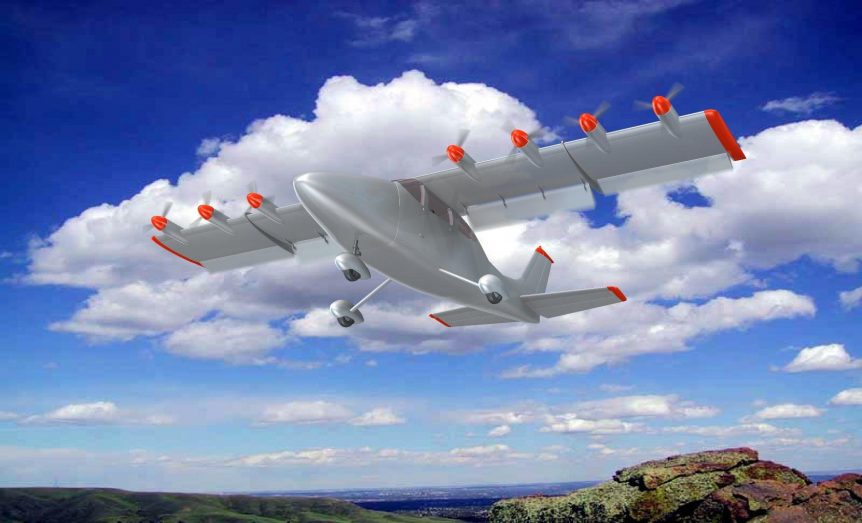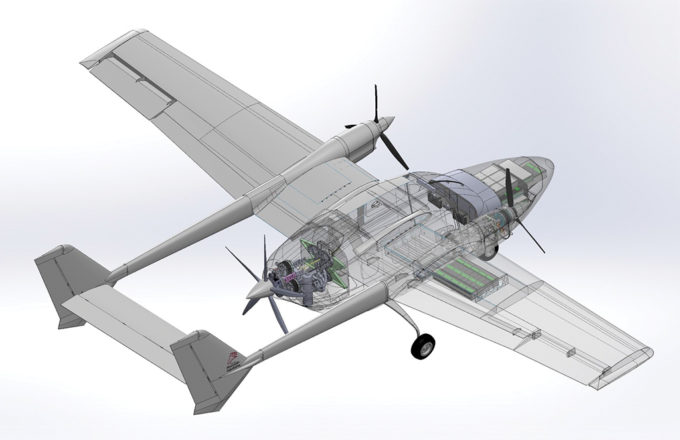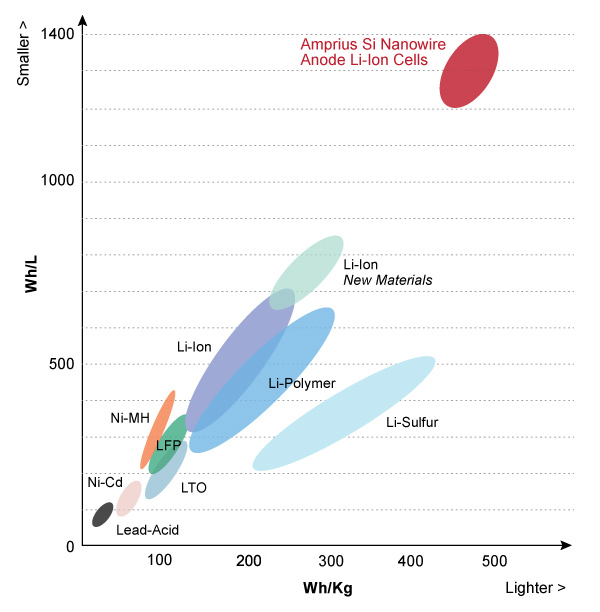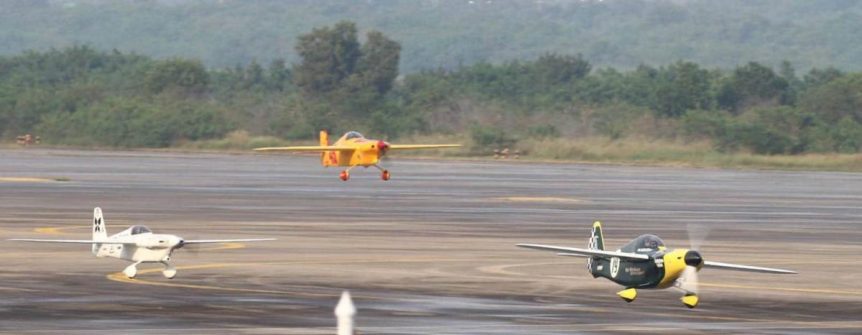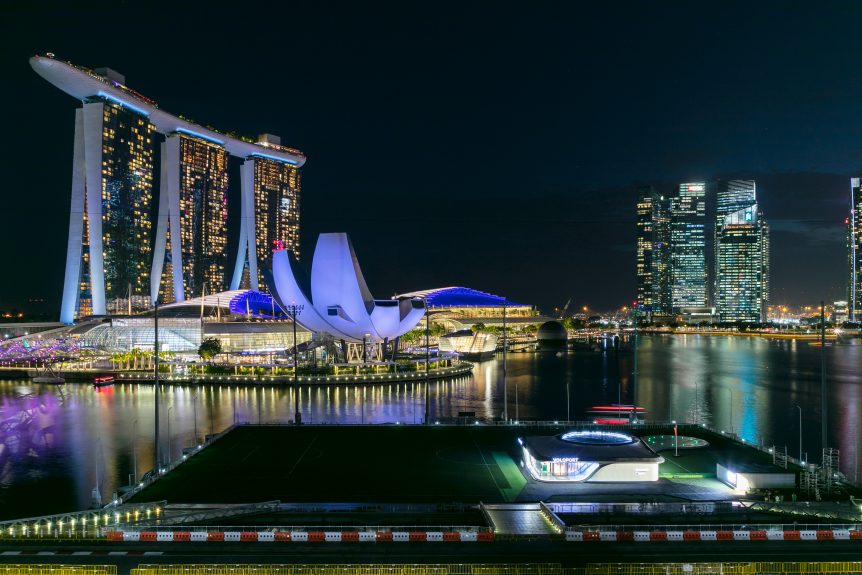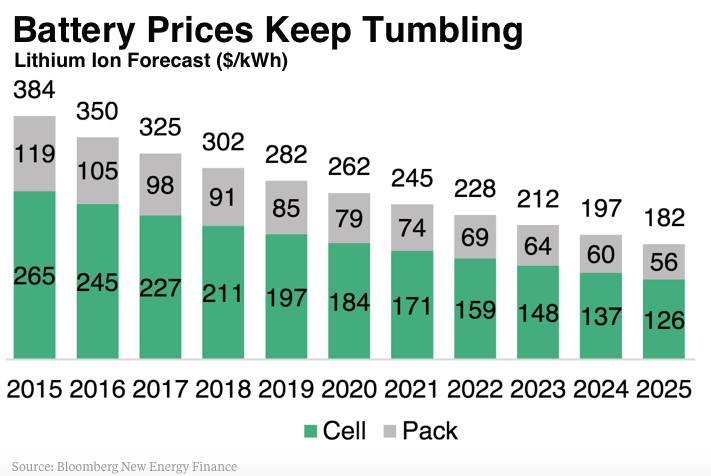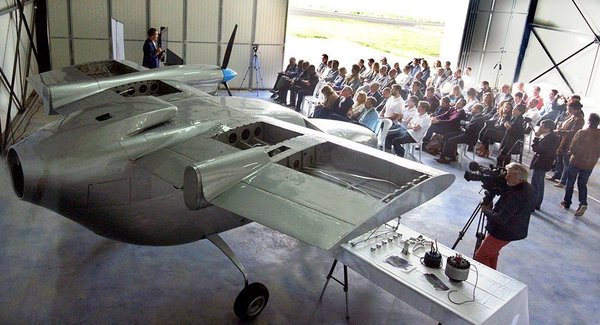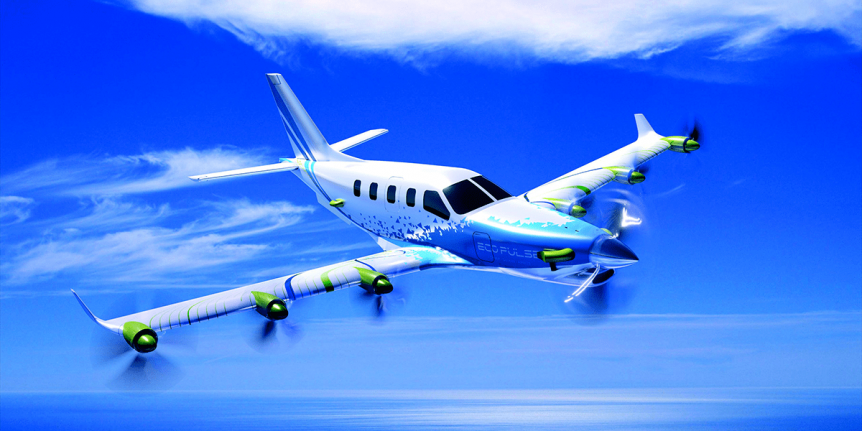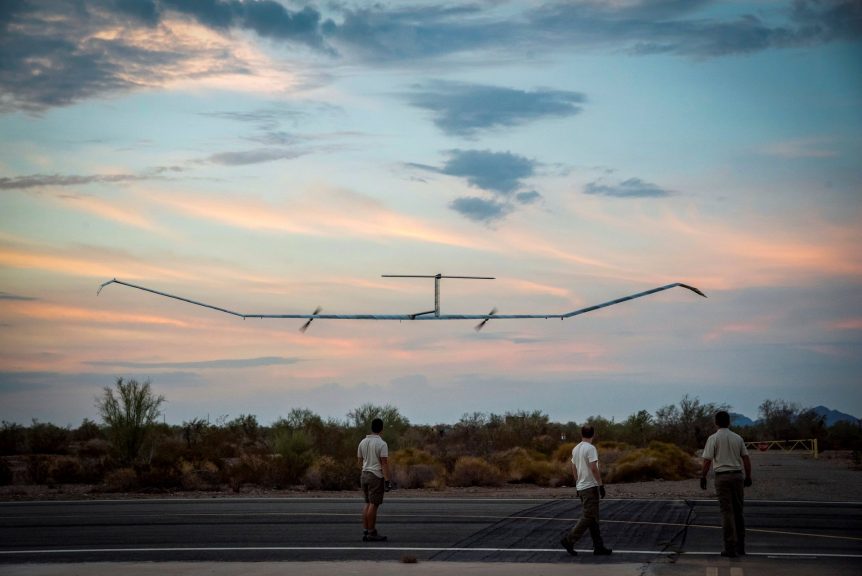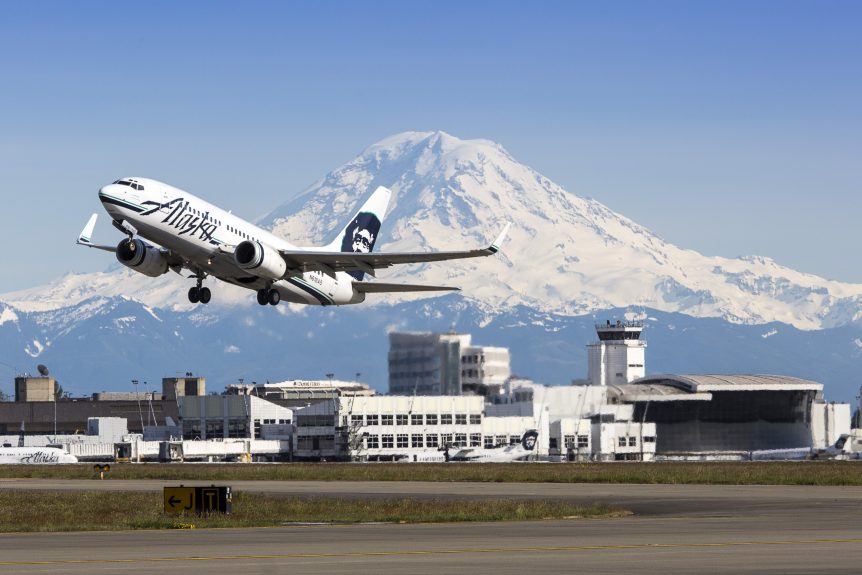Airflow, a recent entry into the electric conventional short takeoff and landing (eCSTOL) market, is pushing forward into fielding a full-scale demonstrator. They are also testing the limits of Artificial Intelligence (AI) in nailing their landings. Airflow’s mission is spelled out in big ideas and bold fonts. “Freight without the wait. The first electric Short Take Off and Landing (eSTOL) aircraft for middle-mile logistics. 1 pilot, 500 lbs of cargo, 0 lbs of CO2.” Airflow’s concept illustrations show a twin-boom pusher with 10 distributed electric motors along the wing’s leading edge. Trying out their ideas for extremely short takeoffs and landings will fall to a modified Cessna 210. In the meantime, the team is advancing its concept at this time with a model Cessna 150 and showing some success at nailing their landings. Airflow calls its pilot assistance program, “Virtual Tailhook,” and it seems to serve that purpose in making landings possible in a tight space. Videos show the progress …
VoltAero Has Ambitious Plans
VoltAero is a small French company that might succeed in electric flight where bigger firms have failed. Its hybrid-electric system marks an innovative path to quiet flight. Airbus ventured into electric aviation with a four-motor conversion of the Colomban cri-Cri in 2010 and a clean-sheet craft, the E-Fan, a sleek, essentially ducted fan two-seater in 2015. Initially big plans for production of two and four seat variants bloomed – then withered. Airbus dropped plans for the personal electric airplane market and instead concentrated on at least three versions of Urban Air Mobility devices and a hybrid-electric demonstrator based on a BAE 146 airliner. This last project, the E-Fan X, was canceled recently. Jean Botti was Chief Technology Officer for Airbus, and Didier Esteyne a test pilot for the Cri-Cri and E-Fan. Botti is now CEO of VoltAero: Esteyne its Technical Officer. VoltAero has ambitious plans for its hybrid electric future, and management experience to pull them off. Flying VoltAero’s unique …
Amprius, Airbus, Silicon and Batteries
Batteries are a tough study. We see many different roads being traveled in attempts to reach the Nirvana of the lightest, most powerful energy storage cell ever. We see continuing shortfalls because of the much chemistries that seem never to work out as hoped. Several recent articles, though, showed links that forced your editor into a deep study of battery developments first heard about a decade ago. These involved Yi Cui, Stanford professor and battery guru, silicon electrodes, and a new electrolyte that holds thing together. Presaging recent developments, your editor first heard Yi Cui present at the 2009 CAFE Foundation Electric Aircraft Symposium. Then, he predicted, based on the theoretical limits for silicon-based electrodes in batteries, that we would see 10X (greater energy density than then available) batteries in the not-too-distant future. A decade later, his company Amprius may be edging toward that goal with new funding from Airbus. Since then, Cui, his students and associates have helped boost …
Air Race E Leaps Forward with Eight Teams
The public got a glimpse of Air Race E at this year’s Dubai Air Show. Jeff Zaltman, CEO of Air Race E and Sandra Bour-Schaeffer, head of XO Airbus Demonstrators, pulled the wraps on Team Condor’s converted Cassutt racer – one of eight teams entering the fray. Race E is an update of the classic small aircraft races held following World War II, and many of the airplanes in the upcoming events will be re-motored and redesigned versions of these craft. Formula 1 racing has not changed much since its 1947 inception. Most air small air racers relied on the Continental C-85 engine, mildly uprated and turning faster than it did in Aeronca Champions or Piper Cubs. Formula E is the first major change and new technology in the field in over 70 years. With the advent of Air Race E, designers are encouraged to create new machines and rethink the means of propulsion. At least eight organizations are …
Volocopter’s Short Flight Over the Bay
Volocopter air taxi flies over Singapore’s Marina Bay Volocopter flew the latest version of its two-seat sky taxi, the 2X, on a two-minute, 1.5-kilometer excursion around and over Singapore’s Marina Bay on October 22. This short flight, surrounded by massive, futuristic skyscrapers, highlighted the controllability of the small machine and its ability to use minimal infrastructure, taking off from and landing on a simple grass plot. Florian Reuter, CEO of Volocopter, applauded the flight’s verification of his vision. “The flight today in Singapore was the most advanced Volocopter flight yet and the piloted flight was as stable as ever. At the same time, we are showcasing a prototype of our full-scale VoloPort Infrastructure, allowing for a realistic demonstration of air taxi boarding and maintenance services. Never before have people been this close to experiencing what Urban Air Mobility in the city of tomorrow will feel like.” Perfect for commuting on the island, Volocopters would enable transit across the 50-kilometer (31-mile) …
Total Operating Costs – Batteries Included
Gilles Rosenberger, co-founder of Faraday Aerospace with Michael Friend, former Technology Director for Boeing, commented on a recent entry on H55’s Energic two-seat trainer. He expanded on the idea of total operating costs for electric aircraft, including the battery replacement. He congratulated the H55 team and added a point about which your editor will attempt greater diligence. “But why keeping talking about operating cost and not total cost of ownership? No pilot, no student is going to pay only few dollars per hours based on the energy cost. Who do you believe is going to pay for other cost including the battery amortization?” Practicing the best public relations and salesmanship gambits, most aircraft sales operations don’t mention the eventual cost of battery replacement. Gilles, who can speak from experience because of his work on the Airbus E-Fan project, says, “Best industry standards seem to be today 1.000 € (or $1,125) per kWh for a 1,000 cycles non-certified battery pack.” What …
Volt Aero Cassio Hybrid – From France
You may have noticed an ongoing divide in electric aircraft philosophies, that of designing from a blank sheet, or that of converting an existing airplane from fossil fuel to electric power. French company VoltAero has chosen the second path with its Cassio. A conversion of a Cessna 337 Skymaster, it shares similarities to Ampaire’s 337 conversion, with significant differences in its power configuration. What has Five (Three?) Motors and Three Propellers? Ampaire’s 337 conversion retains the “push-pull” arrangement of the original, with the “pusher” an electric power unit behind the cabin and between the twin tail booms. VoltAero’s replaces the front engine with a faired, engineless nose and one REX 60-kilowatt (80.4 horsepower) electric motor on the nose of each boom. According to Flyer magazine, Cassio 1 now has a single electric motor coupled to an internal-combustion engine bringing up the rear. “The prototype Cessna-based Cassio has two 60kW motors driving two forward facing propellers on the wing. A hybrid …
What Has One Engine, Six Motors and Seven Propellers?
EcoPulse™, a collaboration by Airbus, Daher, and Safran is a fixed-wing distributed hybrid propulsion aircraft whose power system emulates many of the Urban Air Mobility vehicles that use an electric Vertical Take Off and Landing configuration. Safran, notable for its gas turbines, will supply the propulsion system (excluding batteries). The system consists of a turbogenerator (combined turbine and power generator), an electric power management system, and integrated electric thrusters (or e-Propellers) including electric motors and propellers faired neatly into the wings. EcoPulse partners claim the six small electric motors spread along the leading edge, while providing propulsion thrust, lead to a reduction of wing surface area – much of the wing gaining lift from the blown areas, lowered wingtip marginal vortices from the thrusters on the wing tips, and therefore lowered drag. Airbus will oversee aerodynamic optimization of the distributed propulsion system, installation of “high-energy density” batteries and their use to power the six electric motors. Daher will oversee component …
Amprius’ Silicon Nanowire Batteries Fly – For 25 Days
Sunnyvale, California-based Amprius kept a low profile for several years, despite its founder, Yi Cui, being a leading light in battery development. Their December 4th press release, though, finds the company to be in a more open mood, their advanced lithium-ion cells with 100-percent silicon anodes having flown Airbus’ Zephyr High Altitude Pseudo Satellite (HAPS) for over 25 days, “setting a new endurance and altitude record for stratospheric flight.” This milestone represents a great leap forward since Alan Cocconi flew his So Long solar-powered model for 48 hours, the first of many projects of which he would be an integral part, and the first solar airplane to fly overnight. He worked on the General Motors EV1 and Eric Raymond’s Sunseeker 1 – just a small part of the automobiles and aircraft which he would help create or refine. Your editor first saw Cui at an early electric aircraft symposium nine years ago. Cui discussed the benefits of developing silicon anodes …
Biofuels from Many Sources
We’ve looked at an array of different biofuel sources ranging from used cooking oil and algae to farm and municipal waste. This is essential as the percentage of airline emissions becomes a bigger part of our overall greenhouse gas situation. The Guardian reports, “A 2017 estimate said air travel accounted for 2.5% of all carbon dioxide emissions, with the total emissions expected to quadruple by 2050.”We’ll look here at how some of the early efforts have panned out and examine a late-breaking surprise or two. Mustard Seeds? According to the Guardian, “A Qantas plane powered partly by mustard seeds has become the world’s first biofuel flight between Australia and the United States, after landing in Melbourne on [January 30, 2018].” A major test, the 15-hour flight used a blended fuel 10-percent of which came from the brassica carinata, a mustard seed used as a fallow crop between regular crop cycles. Qantas’ Boeing Dreamliner 787-9 “Reduced carbon emissions by 7 percent …

